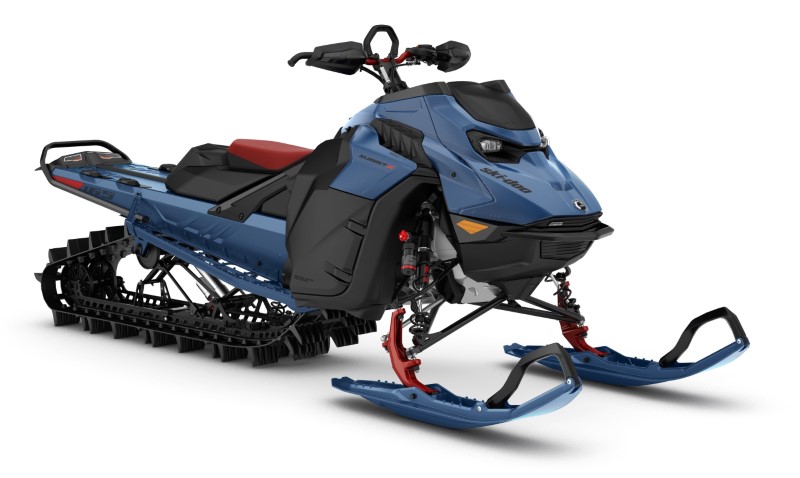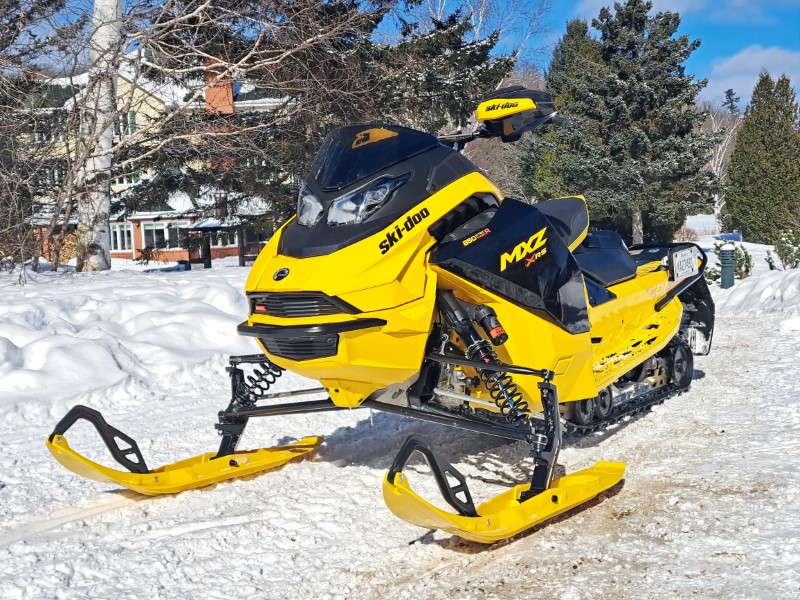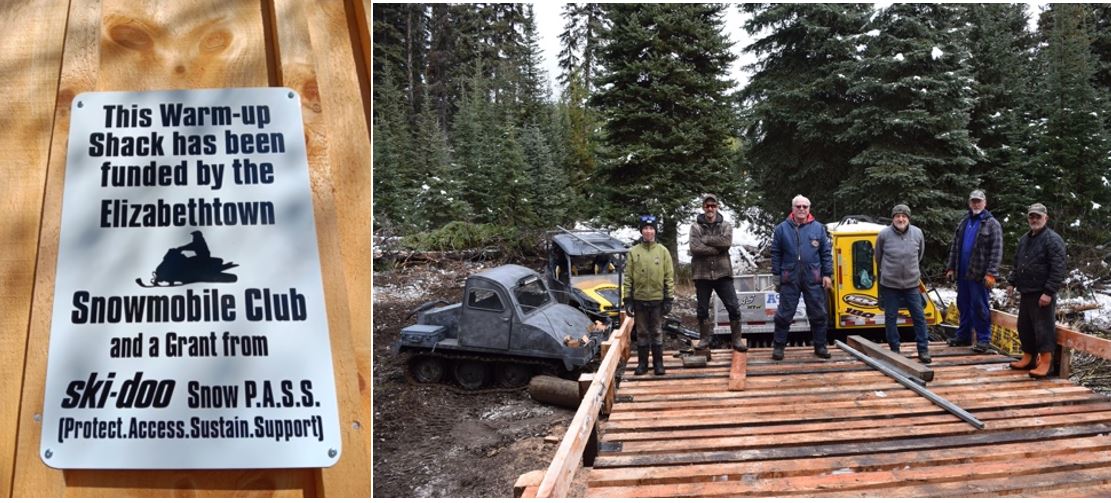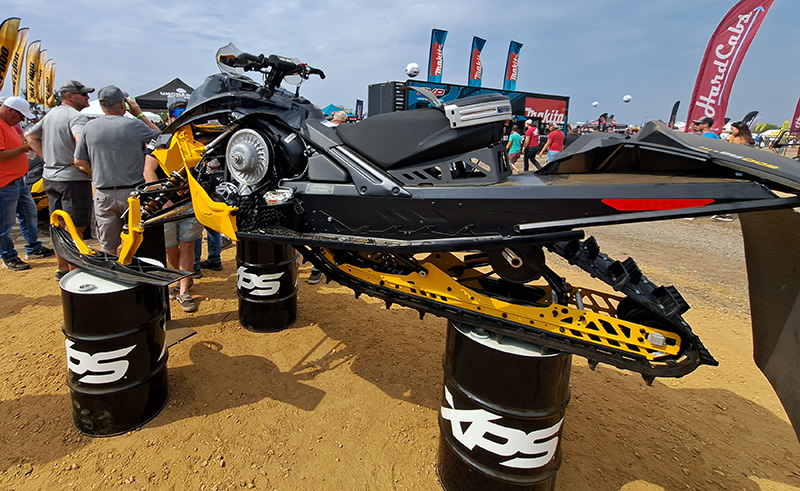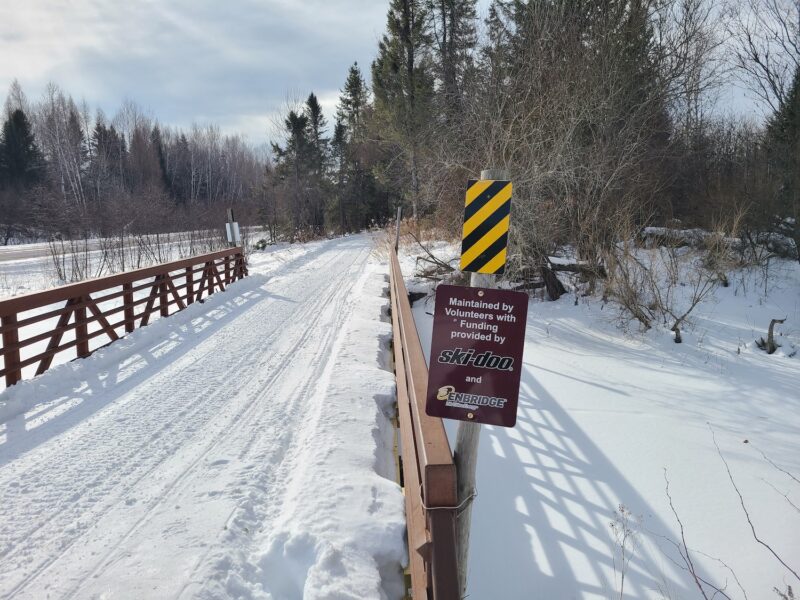A sign that one of our demo snowmobiles was exceedingly good is when we’ve written few notes about the machine. Take our 2010-1/2 Ski-Doo MX Z E-TEC 800R X demo sled for example: Our logbooks contain few words about the then-prototype sled, other than glowing remarks. You see, when something doesn’t work, Snow Goer staffers and test riders (and maybe a few mooch friends) are quick to share opinions about what needs to be fixed. But if things go well, by nature there isn’t much to say because the sled performed well and was fun to ride. With so few notes jotted about it, is it safe to say that the MX Z E-TEC 800R X is the perfect snowmobile?
We’ve logged thousands of miles on REV-XP-based Ski-Doo MX Z sleds, and we’ve said time and again how well they perform, but the E-TEC-fed 800cc engine is what makes this MX Z extra special. Our first trip with the machine was a three-day, 600-mile ride within the remote forests of northeastern Minnesota. We enjoyed trails over lakes and portages that were lined with snow-covered trees. Conditions couldn’t have been more ideal to ride the sled that had people talking last winter.
At restaurants and gas stations where we stopped during that adventure with the early release Ski-Doo, people who were in the know about the special sled gathered around and asked how the direct-injected 800 ran. “It’s an animal,” we said, and went on to tell them that the E-TEC 800R has all of the goodness that the E-TEC 600 H.O. has brought to the trail since 2009, but the 800R has more of all there is to love about direct injected, two-stroke engines. There’s faster acceleration, more torque and responsive, lightweight power that’s addictive. Oddly, the E-TEC 800R felt smoother and easier to ride than the smaller-bore E-TEC from Rotax.
Starting all of this fun simply took a quick tap against the starter button; whether it was 40 degrees F or 20 degrees below zero, it fired up and idled with a smooth, rhythmic hum. We never felt hiccups, lags, bogs or quirks; the engine worked perfectly. There’s no strike against this powerplant, unless a rider doesn’t want as much power as this engine puts out because extra power makes riding a snowmobile more tiring for the driver.
Fuel mileage varied by almost 10 mpg. The first tank of fuel yielded 10.52 mpg, but mileage jumped up to 13.04 mpg for the second tank. With more than 500 miles showing on the odometer, the sled had loosened up and we averaged 14.73 mpg over the course of the next three tanks of fuel. Another staffer recorded slightly more than 20 mpg on an easy-going, 170-mile ride later in the season.
What about the ride? The sled adapted well to different riders and different riding conditions. With X package shocks bolted in the suspensions, a snowmobiler might assume that the sled would be firm and set up only for aggressive riding with fast speeds over bumps. While it was capable for a fast pace over chop and deep moguls, it also gave a comfortable ride when we hit the trail at a more subdued pace. Handling was predictable.

The short windshield looked cool, but did nothing to keep the rider warm, and we replaced the chintzy, stock hand guards with sturdy aftermarket ones that blocked more wind. X package machines like ours don’t have storage, so we added an accessory tunnel bag. Taking these facts into consideration, it seems that this machine is a few hundred bucks worth of accessories away from being the perfect snowmobile.

